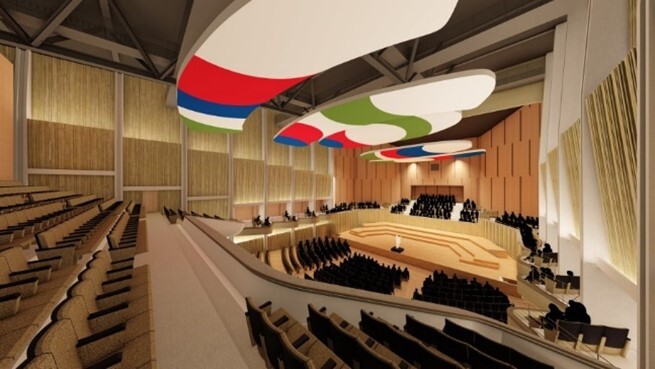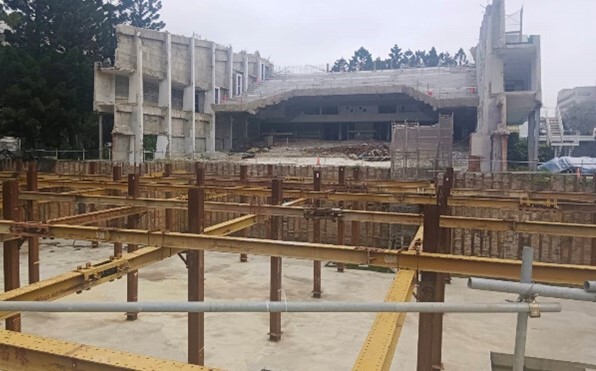Introduction
NTHU Center for Arts and Culture
National Tsing Hua University (NTHU) Center for Arts and Culture (CAC) was promoted to the first-tier unit in August 2021 and now oversees two galleries and one hall: Hung Liang Art Museum, NTHU Concert Hall, and Jie Ying Heritage Museum. With over 30 years of experience in exhibition curation, music and performing arts, film education, aesthetics education, cultural heritage collection research, curatorial practice, and the cultivation of CAC aims to promote the development and construction of NTHU. CAC is responsible for integrating, coordinating, and planning various art and cultural activities on campus, supporting the construction and sustainable operation of the three galleries and hall. With the niche of Hsinchu and international viability, CAC strives to create a diverse, friendly, and interdisciplinary innovative arts environment, empowering the vision of "Tsing Hua Renaissance".
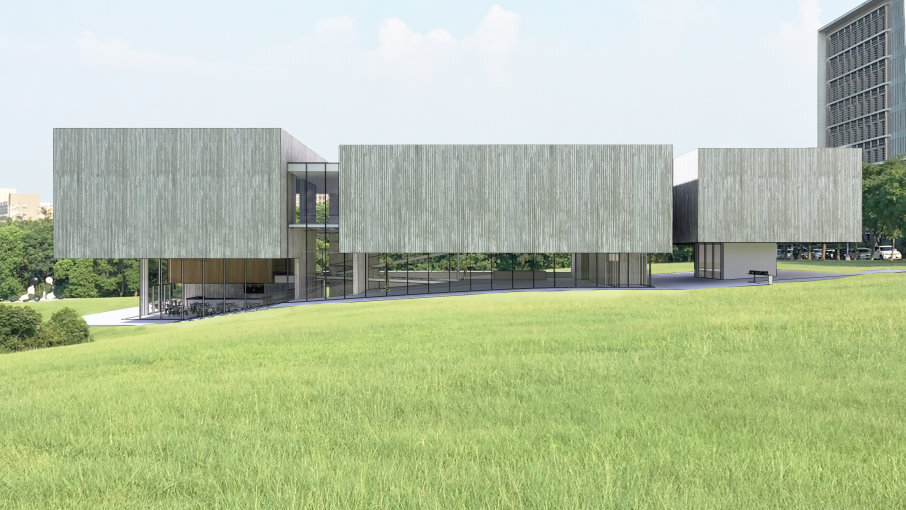
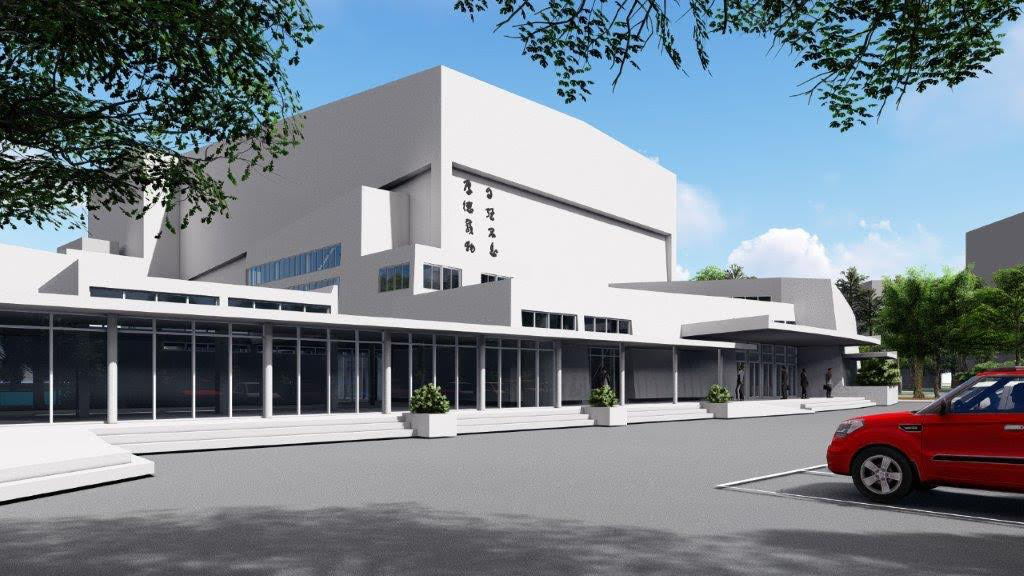
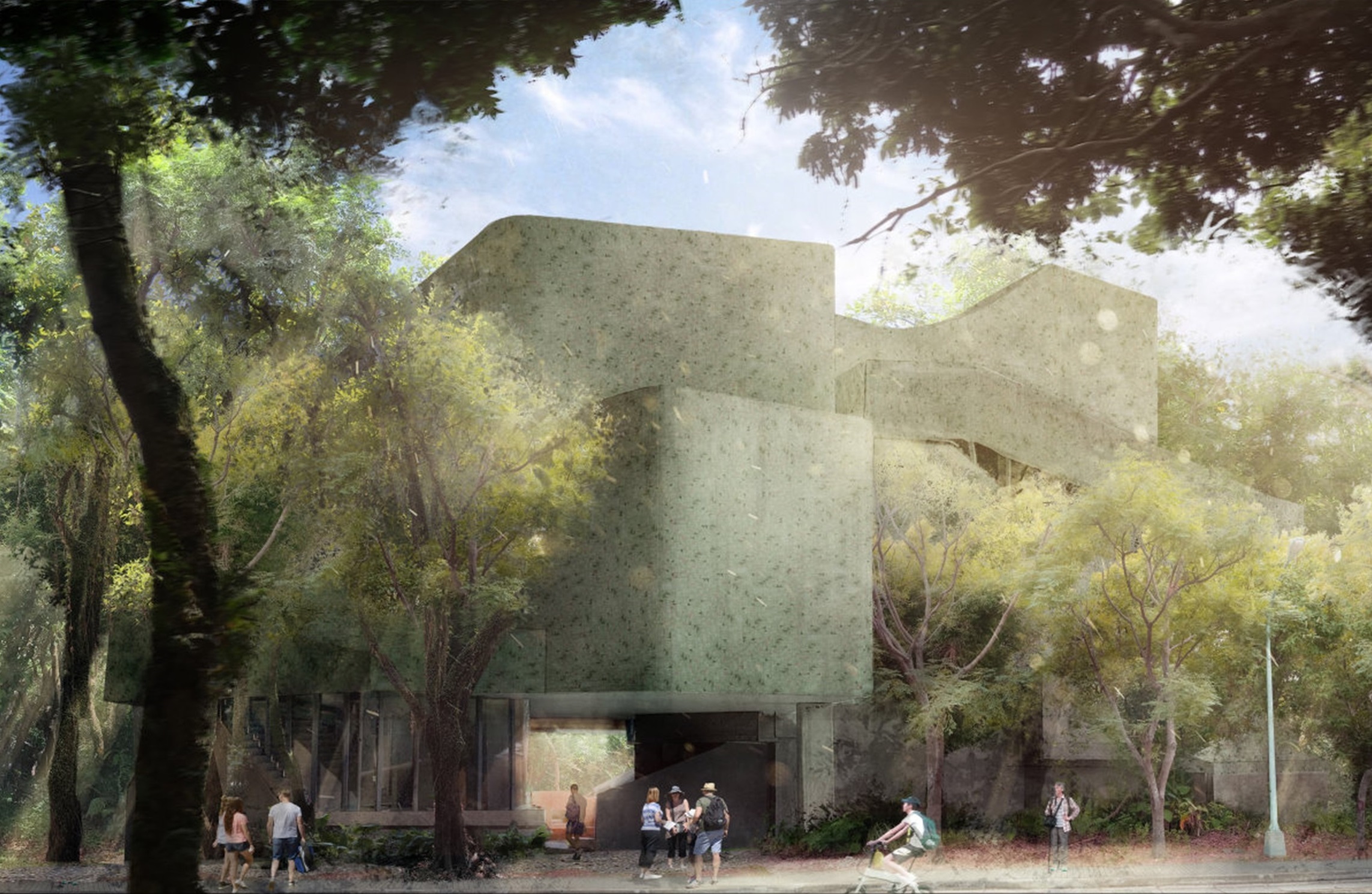
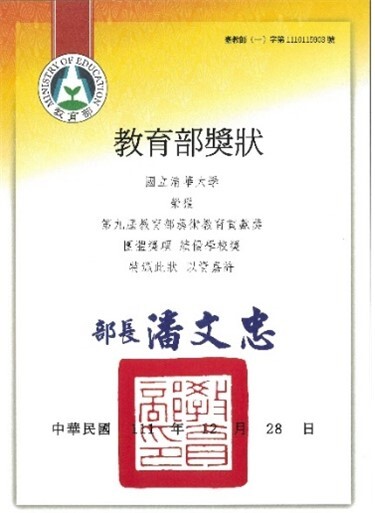
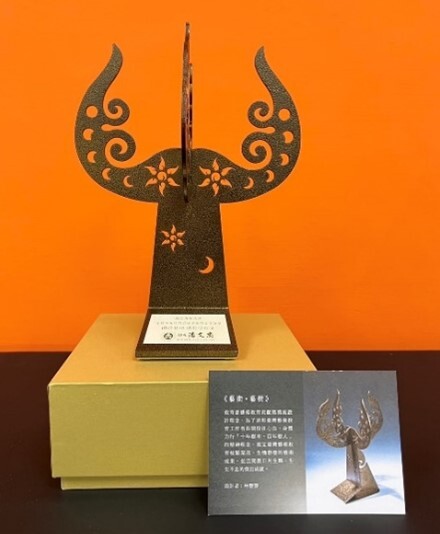
National Tsing Hua University Art Museum (Hung Liang Art Museum)
The Hung Liang Art Museum, abbreviated as the Art Museum, was donated by Tsing Hua University alumnus of the 1973 physics class, Hung Liang Hsieh, it is located next to the southern campus lawn and began construction in 2021. The topping-out ceremony was held in 2024, with the opening expected in 2025. The design team, led by architects Hsu Yuan Kuo and Effie Huang, crafted a green building that integrates with the Tsing Hua landscape. The structure, rising like three boxes amidst verdant sounds, will house permanent exhibitions, special exhibitions, and collections, marking it as the first international modern art museum among top universities in the country.
The Art Museum inherits the cultural heritage of the NTHU Center for Arts and Culture, which has hosted dozens of solo and special exhibitions. It aims to broaden Tsing Hua's artistic vision, enhance the university's international artistic visibility, provide knowledge and participation in contemporary art for faculty, students, and the community.
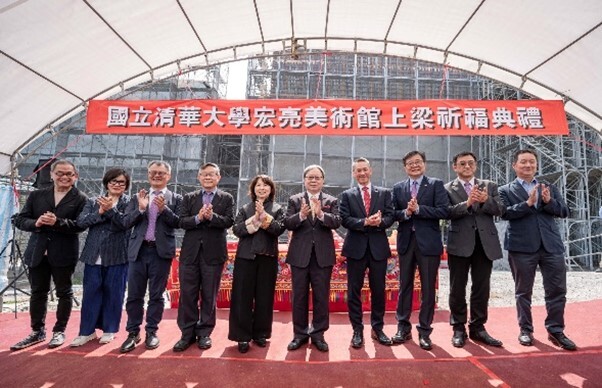
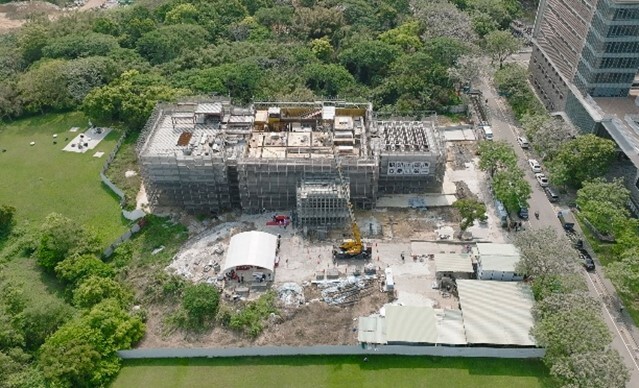
National Tsing Hua University Heritage Museum (Jiey-Ing Heritage Museum)
The seed of the Jie Ying Heritage Museum was planted in 2008 when Prof. Yang Rur-Bin and Prof. Fang Sheng-Ping donated their collections to NTHU. A preparatory office was created in 2015, and 2022 saw the official launch of the Heritage Museum. The treasures donated by the two professors include thousands of documents, manuscripts, literature, calligraphy works and paintings that span 300 years of modern Eastern Asia, from Confucianism in the Ming and Qing dynasties, Sinology in the Edo Period of Japan, the Japanese occupation period, as well as the 1949 civic wars. A Platform for historical and cultural dialogue among Sinographic Cultural Circle. On the Basis of East Asian historical and cultural artifacts.
The museum building, Jie Ying Hall, is funded and named by Chairman of TSMC Education and Culture Foundation Dr. Fang Churng Tseng and his wife. The green building, completed in 2024, was designed by Fieldoffice architect Mr. Huang Sheng-Yuan and is blended into the forested area of the NTHU campus.
The Jie Ying Heritage Museum started holding special exhibits and micro-exhibits in the Micronix Building while still in the preparatory stage. The exhibits included Confucianism in the Ming and Ching Dynasties, Sinology in the Edo Period of Japan, calligraphy works and paintings from the Japanese occupation period, as well as the 1949 war-related artifacts, showcasing NTHU’s cultural visions across East Asia. The museum regularly collaborates with various universities and cultural institutions, to promote academic exchange and historical education. These efforts highlight the rich and diverse heritage of Chinese character culture across Taiwan, mainland China, and Japan, reflecting the profound cultural foundation of the "new cross-strait and three-region" interactions. Additionally, the museum actively engages with schools and local cultural and historical groups in Hsinchu, contributing to the preservation, reflection, innovation, and sustainability of local culture.
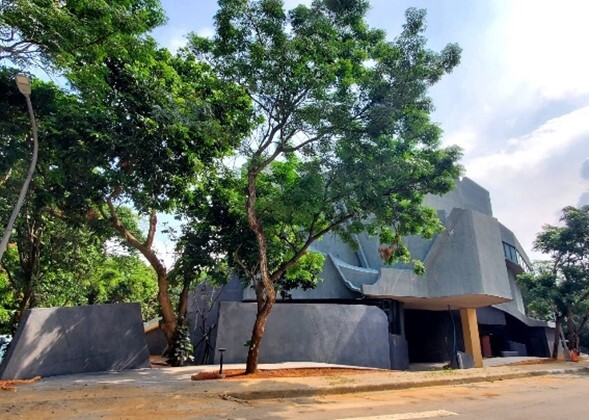
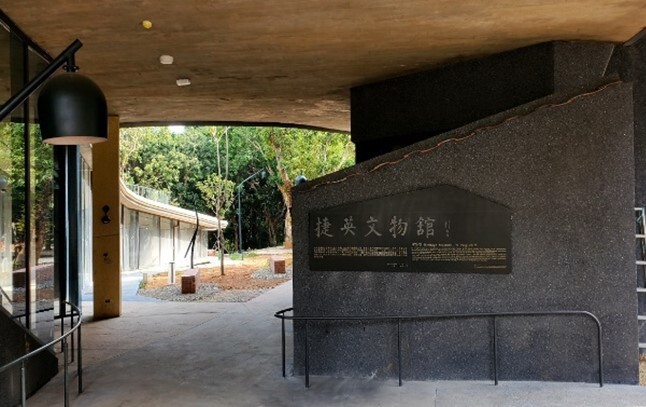
National Tsing Hua University Concert Hall
The National Tsing Hua University Main Auditorium is an iconic building that embodies academic and artistic pursuits and a pure spirit. It has stood by the Lake Success for nearly five decades, witnessing the growth and transformation of the Tsing Hua community. The Main Auditorium stage has been graced not only by Nobel laureates and great scientists, but also students' youthful performances and thoughtful debates. The glass corridor outside the building connects the music bookstore, orchestra practice rooms, and dance society rehearsal halls, showcasing the spirit of Tsing Hua people who practice their art.
Now, the Main Auditorium is undergoing an expansion to become the "National Tsing Hua Concert Hall" (NTHU Concert Hall). It will be the only university concert hall in Taiwan with state-of-the-art facilities and the first professional music performance venue in the Hsinchu region.
The NTHU Concert Hall retains the facade of the Main Auditorium, preserving part of Tsing Hua’s history while representing a great stride forward for education in the humanities and the arts at the University. Tsing Hua's school motto, "Ceaseless Self Improvement and Social Commitment," remains on the pristine white wall, a reminder of the historical heritage passed down through the Main Auditorium within the cultural context of Taiwan. The upgraded interior and attention to artistic professionalism together provide a powerful teaching tool for Tsing Hua's innovative cross-disciplinary educational approach.
The architectural design of the NTHU Concert Hall has elevated it to a work of art, with an understated and streamlined style that blends seamlessly with the surrounding environment. The interior is designed to standards almost as exacting as those for the sound of musical instruments, making it a world-class concert hall that is perfect for all types of performances, from symphonies, solo recitals, to chamber music.
The NTHU Concert Hall has a total floor area of 7,434 square meters and a seating capacity of 1,271. Designed by the internationally renowned architectural acoustician Albert Xu, the seating surrounds the stage in a vineyard-style layout, allowing the audience to experience the impact of the music from every angle. In addition, the roof of the NTHU Concert Hall has been expanded and raised to increase the building's volume and attain a reverberation time of two seconds, on par with world-class concert halls, achieving a perfect balance between the richness and clarity of musical expression.
In addition, the NTHU Concert Hall has expanded its backstage space, added rehearsal rooms, and improved lighting and accessibility facilities. These changes not only enhance the quality of performances, but also provide a more comfortable viewing environment for the audience, allowing performers and listeners alike to enjoy the best musical experience.
Former National Tsing Hua University President Hocheng Hong once said that the NTHU Concert Hall is the Weiwuying (National Kaohsiung Center for the Arts) of northern Taiwan. To build a world-class concert hall at Tsing Hua, he invited the team behind Weiwuying, including architect Lo Hsing-hua and the lighting and sound team. Acoustician Albert Xu, who was also the acoustics designer for Weiwuying and the Philharmonie Luxembourg, established several core principles in the early planning stages of the NTHU Concert Hall. Through the expertise and experience of these professionals, Hocheng Hong hoped to create a concert hall that will capture the attention of the international music community.
Once completed, the NTHU Concert Hall is expected to fill the Tsing Hua campus with even more music and artistic charm. For music enthusiasts and people who appreciate art and culture, and for students and audiences alike, the NTHU Concert Hall promises to create countless heartfelt moments and delightful surprises.
